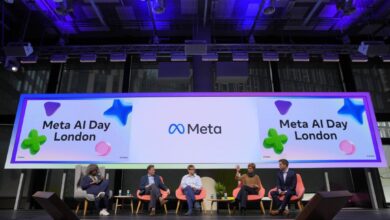How to get started, increase ROI and manage risks

If you’re a Chief Legal Officer, you’re likely getting an earful about generative AI (GenAI). The CEO wants to know your plan. Your people do too. And vendors of all flavours are pushing new AI-centric tools. This urgency may be justified, because GenAI is starting to transform the legal function and profession.
Other technologies can deliver value but usually they perform one task only, in a silo. GenAI can and should be different. A single GenAI model may be able to augment almost every aspect of your traditionally written and document-related work: contracts, legal research, document review, document writing (including subpoena responses, pleadings, filings and briefs), horizon scanning and more. GenAI can also be far more consistent and accurate than other technologies when faced with ‘unstructured data’, such as legal documents. Compared to conventional AI, when thoughtfully integrated into your legal technology ecosystem, GenAI can also deliver more value more quickly.
This combination of scalability, accuracy and speed-to-value can increase your capacity and responsiveness. It can help you give the business a competitive edge. It can lead to remarkable ROI. But to achieve this value and not get left behind, it’s important to be strategic. Here are five guidelines that can help:
1. Understand what’s different
With conventional AI, each new task usually requires you to build a new model from scratch — or ‘retrain’ an old model, which is often costly and time consuming. But GenAI models come ‘pre-trained’ on billions of data points. That helps make these models faster to stand up. It also helps make them more easily adaptable to new tasks, since they draw on such a vast knowledge base.
2. Build trust and address risks
As a legal professional, you may feel that being risk averse is part of your job description — and letting AI read or even write your documents may sound risky.
Trustworthy GenAI begins with licensing a private version of a GenAI model, then deploying it within a safeguarded IT environment — walled off from the outside world. With rigorous information governance, you can then feel safe augmenting the private GenAI model by incorporating or ’embedding’ your proprietary data — such as in-house examples of briefs. Your legal professionals can review the model’s outputs, treating them like first drafts. This skilled human oversight can put guardrails around potential faults and risks. It can also further refine the GenAI model to better meet your needs.
To help guide your people and provide governance, you’ll also need responsible AI practices.
3. Prepare your workforce
GenAI is not here to “take away people’s jobs.” But it can change those jobs and allow redeployment — for the better — if you prepare correctly. By gathering, analysing and providing easy access to data, GenAI can vastly speed up legal research. When GenAI writes first drafts of common documents, such as simple contracts or advice, your in-house legal professionals can focus upon reviewing and improving these documents, and release their capacity to then focus on more complex legal issues.
But your in-house legal team should know when to use (and not use) GenAI; how to craft thoughtful ‘prompts’ that can result in high quality outputs; how to review those outputs and refine the GenAI model by incorporating relevant data to achieve better results; and how to apply responsible AI practices for trusted, compliant and ethical use. Lawyers can often be highly skilled at writing prompts. It’s a task that aligns with their training to be intentional and precise in words and questions.
The goal should be to build a legal function that is both tech-powered and human-led. People will still make the big decisions and perform the more strategic, complex work, but technology can help along the way.
4. Think big
GenAI will likely reinvent the legal profession — but it won’t do so overnight. Among other limitations, there isn’t enough computing power right now to deploy GenAI everywhere. Nonetheless it’s still important to prepare a strategy that doesn’t simply focus upon individual use cases — that would be missing the forest for the trees. Instead, your GenAI strategy should consider this technology’s incredible scalability: how a single model can, with a little refinement, work across your entire legal function.
Given GenAI’s wide applicability, your GenAI strategy should also be part of a broader legal department rethink. Some big picture questions to consider include:
What new value can your paralegals and junior lawyers deliver, when GenAI accelerates both legal research and first drafts of legal documents?
What work could GenAI help you do in-house, reducing the need for outside counsel?
What innovation can legal technology teams deliver, as GenAI accelerates software development?
What new value can you provide the business when GenAI is an automated assistant (providing the right insights in the right format at the right time) for your senior leadership?
5. Integrate into your tech ecosystem
Your legal function, like many, may already have a lot of tech — both home grown and from third parties. These tools typically operate in silos: they perform different tasks for different people, on different systems and using different documents and data sets. Document management, patent management, matter management, contract management, legal holds, e-Discovery, entity management, deal rooms (and more) are typically systems that don’t talk to each other.
These silos can stop GenAI from accessing the data it needs to scale and perform as it should. It could be hard, for example, to train GenAI on examples from your more experienced lawyers’ advice, if this is saved on different, isolated systems. That’s why, as you prepare to integrate GenAI into your legal technology ecosystem — where it can help almost every tool work better — you should start or accelerate work on connecting these tools and organising your data, whilst still being cognisant of confidentiality and maintaining privilege.
GenAI can also help accelerate legal tech integration. Similar to how reporting can work, GenAI can sit across and tap into your systems. Its user-friendly interface and its ability to make sense of unstructured data can, over time, help your other technology tools access more thorough and reliable data. That can also reduce the need for ‘rip and replace’ tech efforts, enable more rationalisation and increase your ability to turn data into insights and value to the business.
This is an abridged version of an article that originally appeared in PwC’s TechEffect. If you would like to learn more about using GenAI for your legal or compliance team in Australia, please contact Peter Dombkins and Mick Sheehy.



